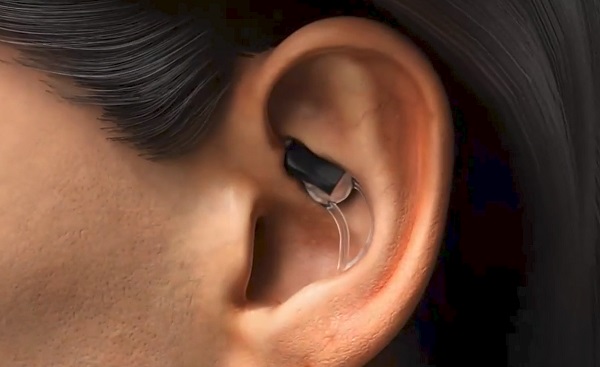Digital health company STAT Health has unveiled a 24/7 in-ear wearable that uses optical sensors to measure blood flow to the head to better understand symptoms such as dizziness, brain fog, headache, fainting, and fatigue that occur upon standing. All are common symptoms for illnesses including long COVID, postural orthostatic tachycardia syndrome, and myalgic encephalomyelitis/chronic fatigue syndrome.
These “caused-by-standing” conditions affect more than 13 million Americans.
The device’s developers clinically tested the wearable at Johns Hopkins University. They then described the research in the March 2023 issue of Journal of the American College of Cardiology. So far, the device has been shown to predict fainting minutes before it happens.

STAT Health’s in-ear wearable comprises various optical sensor technology, including gauges for pressure, accelerometry, and temperature, as well as AI edge compute. Courtesy of STAT Health.
The company said that its STAT wearable is half the rigid volume of Bose Sleepbuds, and is even smaller than some invisible-in-the-canal hearing aids. To fit into a wearable form factor, STAT uses an optical sensor instead of ultrasound and taps into a shallow ear artery to measure a proxy to ultrasound-derived cerebral blood flow. In addition to this optical sensing technology, the device incorporates an accelerometer, a pressure sensor, temperature sensors, AI edge computing, multiday battery life, and a micro solar panel.
According to Daniel Lee, co-founder and CEO of STAT Health, the ear is a favorable location within the human anatomy for biometric sensing, due to its proximity to the brain and major arteries.
Also, Lee said, the ear is largely isolated from data corruption caused by arm motion. This problem prevents wearables from monitoring heart metrics during many daily tasks, he said.
STAT Health is backed by $5.1 million in seed funding. The company has also received grant funding from the U.S. Air Force.